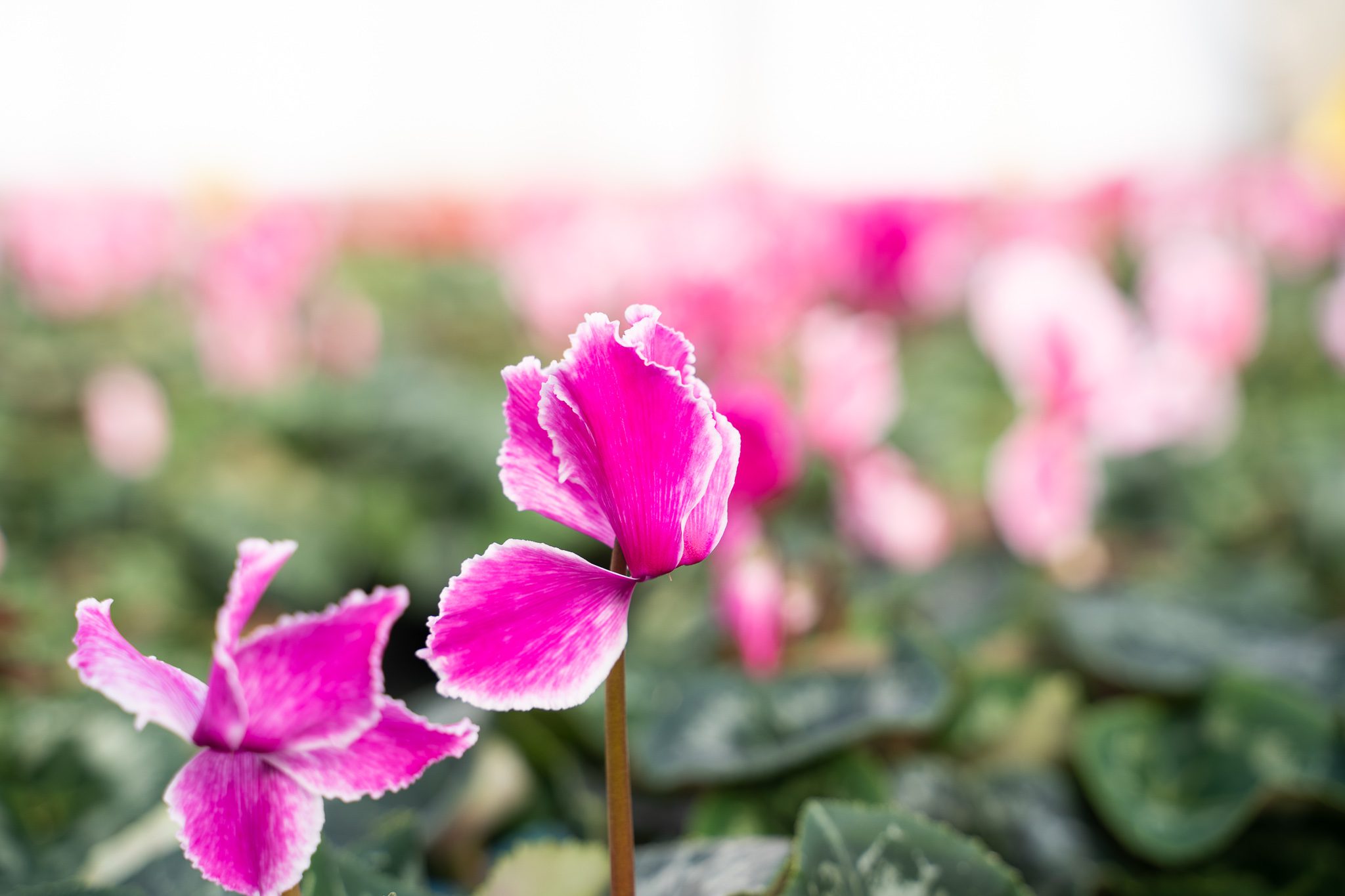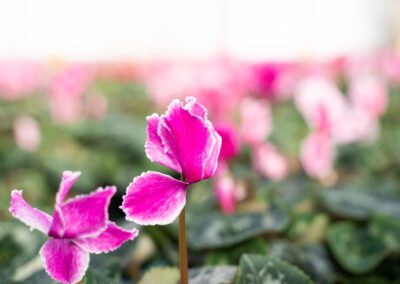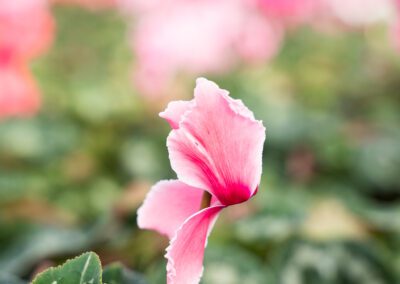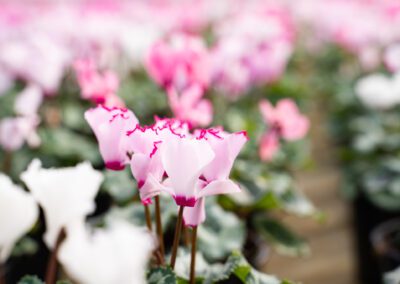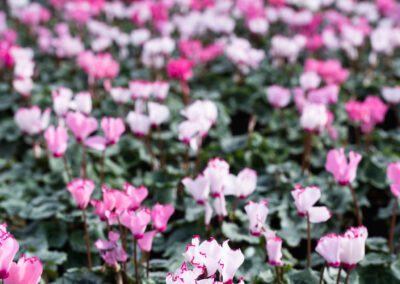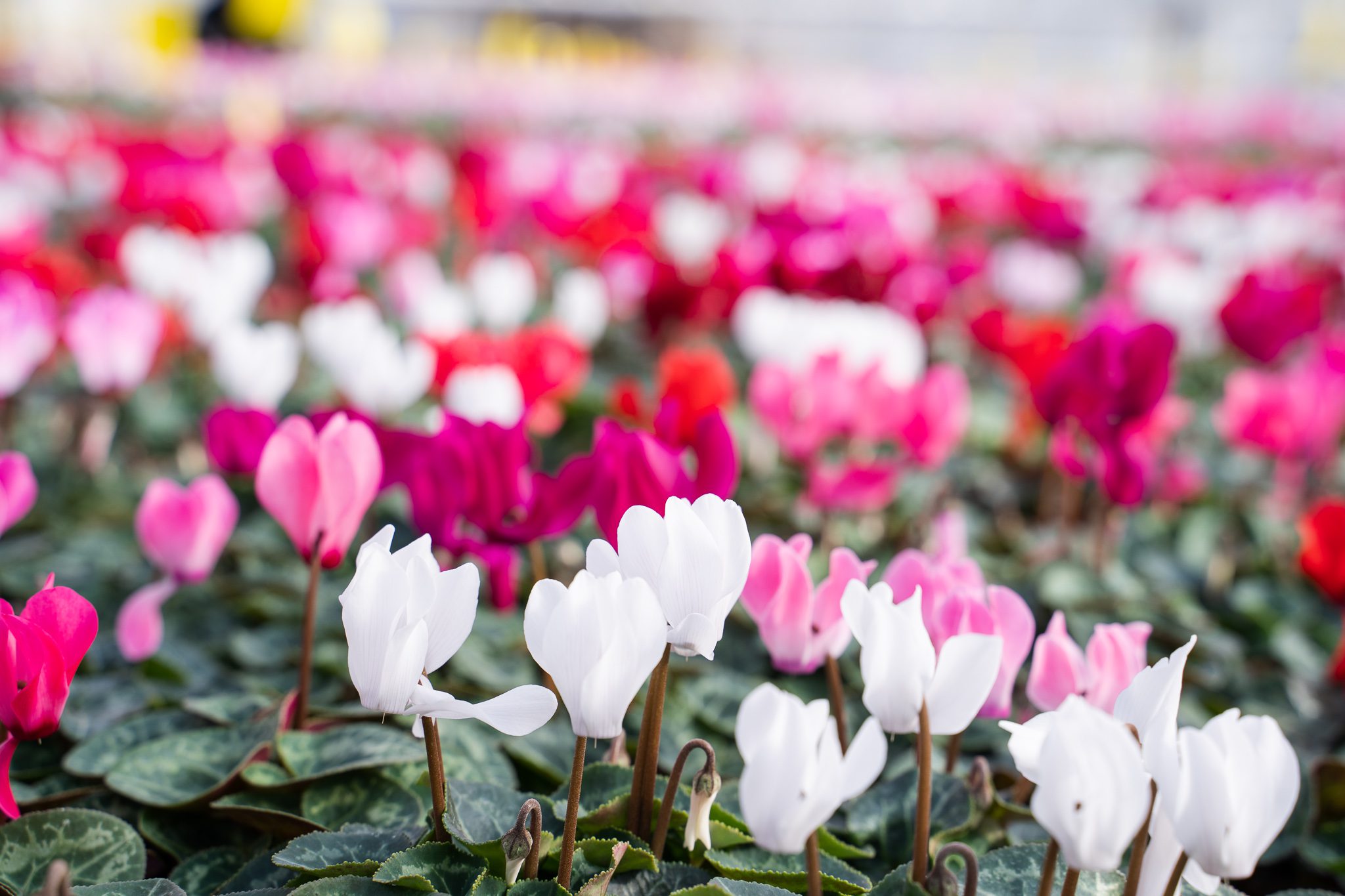
Cyclamens are a beautiful houseplant to enjoy during the cold, winter months. They have pretty, heart-shaped leaves with dark-green veining and beautiful blooms that pop right out of the middle of the plant! These qualities make this blooming plant a winner for many!

Because we enjoy these plants so much, we want them to last as long as possible in our homes. Your cyclamen needs a cool, bright spot to thrive, but away from direct sunlight. Keep in a cool room if possible. In nature, cyclamens grow in cool, humid environments. If the temperature of your house is over 68 degrees F. (20 C.) during the day and 50 degrees F. (10 C.) at night, your cyclamen will start to die slowly. Temperatures that are too high will cause the plant to begin to yellow, and the flowers will fade rapidly.
Water once the soil begins to feel dry. Rather than watering with a watering can, which can splash water on the leaves causing mildew, stand the plant in a saucer or shallow bowl of water for an hour or so until the compost is moist but not soaking wet. Let any excess water drain away.
Cyclamen don’t need much feeding – otherwise they will produce lots of foliage rather than flowers. Feed every couple of months with a house plant fertilizer if you’re planning on keeping your plant from year to year; if not you don’t need to bother.
Remove any dead or dying flowers or leaves by tugging them away gently.
When taking care of a cyclamen after blooming, allow the leaves to die and stop watering the plant once you see the signs that the leaves are dying. Place the plant in a cool, somewhat dark place. You can remove any dead foliage, if you would like. Let sit for two months.

Growing indoor cyclamen: problem solving
Most problems with indoor cyclamen are caused by over watering or high temperatures.
Yellow leaves in autumn or winter mean the room is too warm or the plant has been under- or over-watered. It may also have received too much sunlight. Keep your plant in a cool room, out of bright sunshine, and water when the soil begins to dry out. Yellow leaves in spring are normal, however – the plant is dying back naturally before going dormant.
Poor flowering is due to the room being too warm – this will send the cyclamen into early dormancy. In spring, it will stop flowering naturally, however.
A collapsed cyclamen could be due to it getting too much water. If it’s is brown and mushy at the centre, this may also be due to crown rot, due to water splashing on the leaves and stems, or temperatures that are too low. A collapsed plant can also be due to vine weevil larvae, which eat the roots.
Grey, fuzzy mold on the stems or flowers could be cyclamen grey mold, Botrytis cinerea. This develops in humid conditions. Removing dead leaves or flowers promptly can help prevent it developing, as can avoiding splashing water on the leaves.
https://www.gardenersworld.com/
https://www.gardeningknowhow.com/houseplants/cyclamen/cyclamen-care.htm
